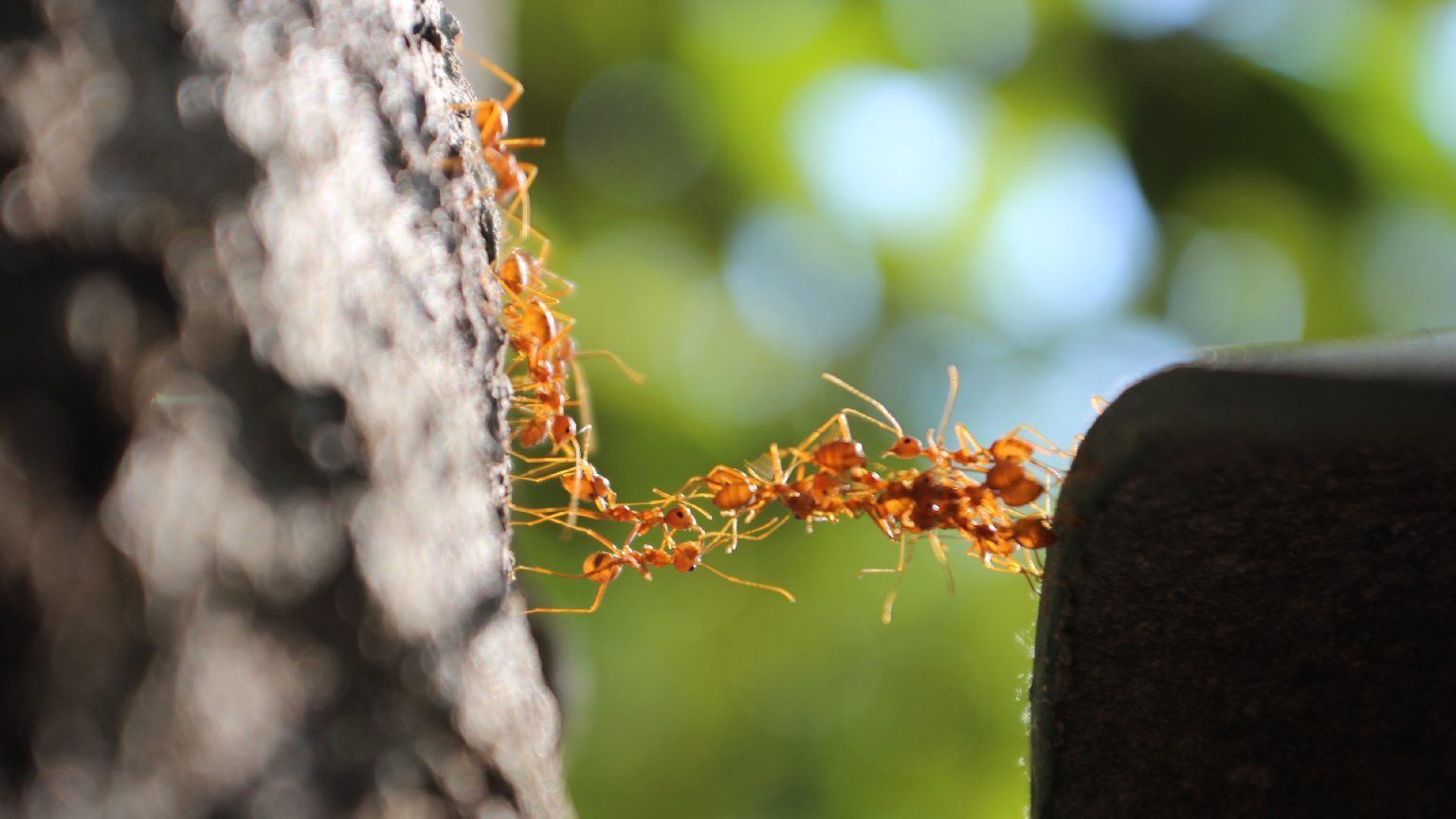It remains a mystery to us how migratory ants can build incredible scaffolding and bridges without any coordination, simply by clinging to each other – they have spoken about the latest breakthroughs in the field. Australian Science.
Migratory ants are known as food-gathering drawings, in which case they swell out of their nests in great numbers and drop all prey that gets in their way.
On such a hike, up to 200,000 ants can travel at a speed of 13 cm per second in a strip 20 meters wide and 100 meters long. The result is more than 3,000 prey fallen per hour.
In some species of ants, such as migratory ants, in addition to workers, larger military personnel are also part of the tuft. While drawing migrating ants, under the supervision of soldiers, worker ants stick together and build bridges.
Here’s a striking example of migratory ants’ abilities to attack a hornet’s nest:
Before, they didn’t really know how these small blind animals could orchestrate the creation of such amazing “structures”. For the first time, researchers have described one of the structures built by the ants, which is called a “scaffold”.
Scaffolding provides a kind of safety net for the soldiers, and prevents them from falling over when they have to move on steep terrain, such as a wall. The following video also shows such a situation in action:
In their study, the researchers walked through the forests of Panama, Central America, looking for swarms and directing their migration from horizontal terrain to an obstacle course with a slope of between 20 and 90 degrees.
In their experience, ants seldom would build scaffolds when the slope was less than 40 degrees, but in steeper cases they had already created these auxiliary structures, especially when workers were carrying heavier prey. The result is clear, with nearly zero ants falling even on steep surfaces during migration.
Ants are masters of architecture, and many species have already noted that they formed useful structures on their own.
True masters of wandering ants, like road maintenance workers when punched, cover obstructions with bridges made up of their bodies.
Ants, for example, are also able to stick together from their bodies to form a raft in a flood, so that they can float on the surface of the water for several days until they reach land safely. An example of this can be seen in the video below:
This construction requires unusual coordination, especially in light of the fact that there are no leaders among the ants and the schemes are not used. Each ant only sees its neighbor and surroundings in action.
Similar behavior can be observed in animals in the movements of flocks of birds or flocks of fish. Scientists have not been able to explain such abilities before, but they now know that simple relationships between individuals can lead to complex patterns at the group level as a whole.
Researchers have now contributed to understanding this phenomenon by modeling the positions of ants. In their view, the behavior of the ants depends on a simple mechanism. They are aware of how much their slope is due to the slope of the ramp and make an individual decision based on it, without joint communication.
The ability of animals to create complex and adaptive structures can be used in a variety of engineering fields.
For example, it can help design self-healing plastics that can rearrange their structure after an injury. Or it could even contribute to the development of swarm-moving robots, for example, such robots could be built together on similar principles for the purposes identified as a bridge.
In conclusion, we note that in light of the above, there is a basis for reality when the protagonist in the 2015 film Ant superhero escapes by his assistant ants clinging to each other and slipping together like a boat in a canal. Based on the latest scientific developments, we can look at this landscape with a slightly different eye:
https://www.youtube.com/watch?v=QXcNUdJi1kw
Cover photo illustration.













































